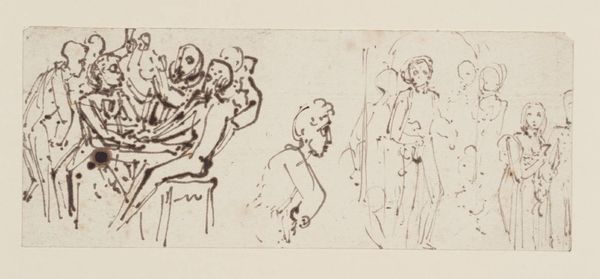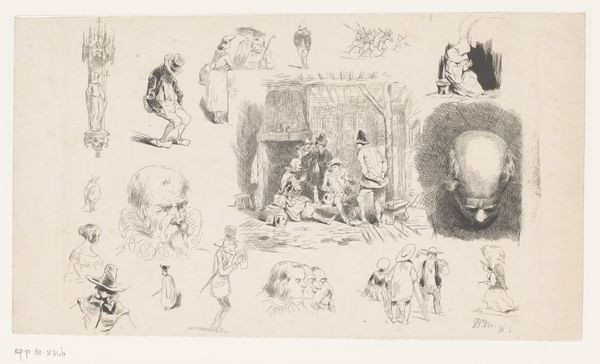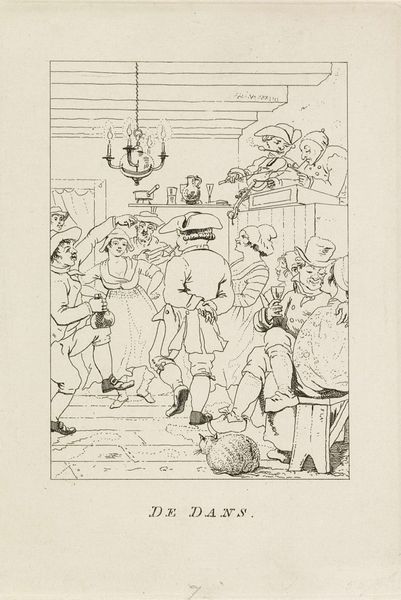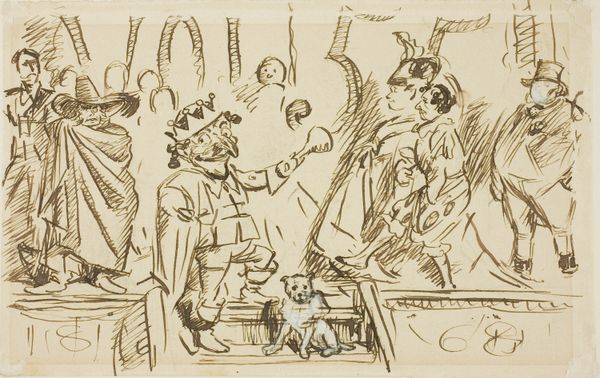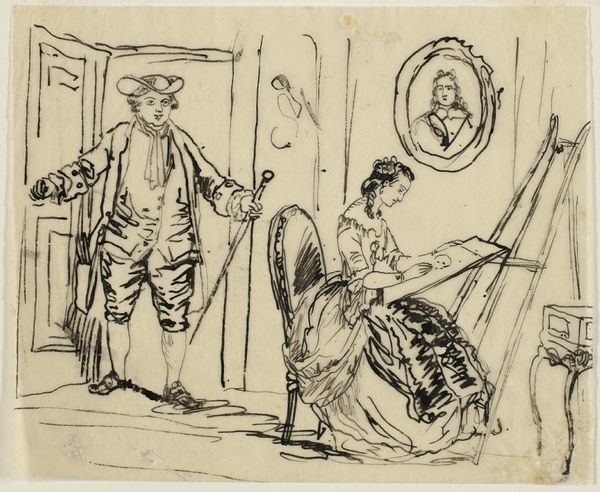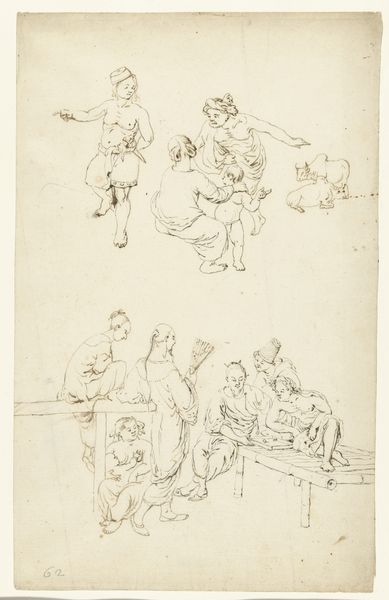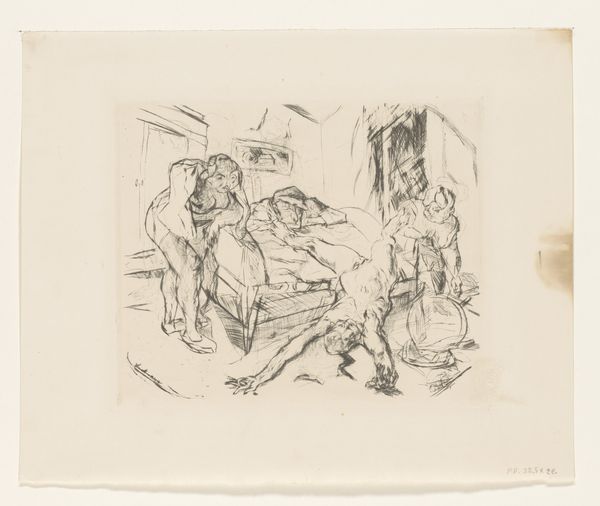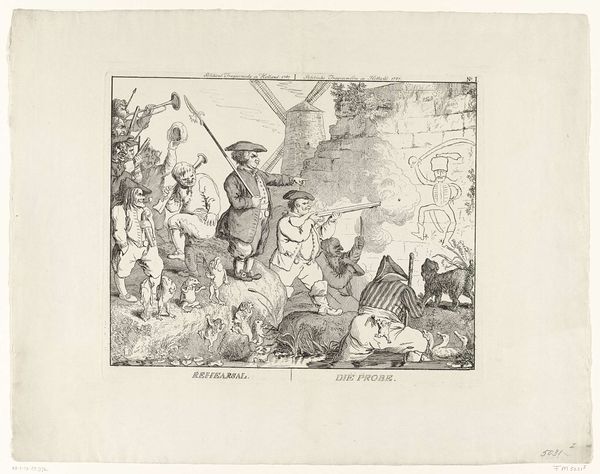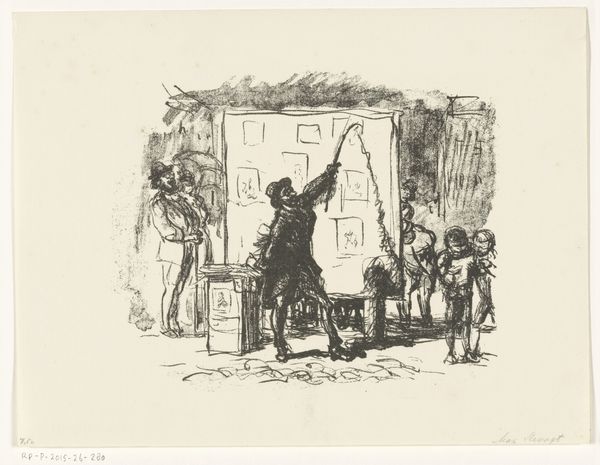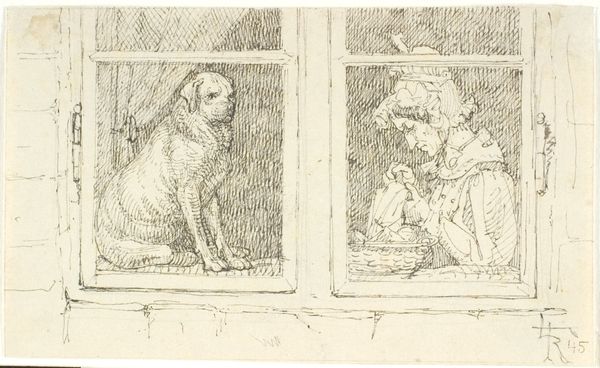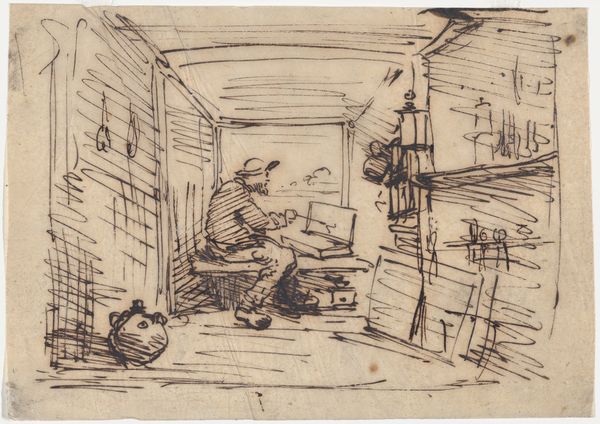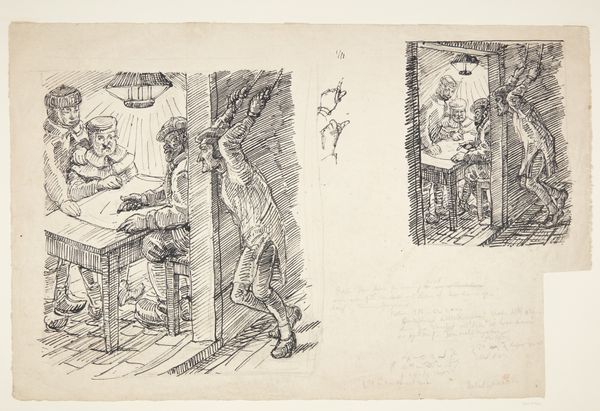
Dimensions: support: 307 x 513 mm
Copyright: CC-BY-NC-ND 4.0 DEED, Photo: Tate
Curator: John Flaxman, born in 1755, created this etching titled "Waiting on Sir Ed. Hales at St Stephens. Caricature," currently held at the Tate. Editor: It has an unfinished quality, doesn't it? As if capturing a fleeting moment, but also rough around the edges. Curator: Flaxman, known for his neoclassical style, often used caricature to satirize social and political figures. The symbols here are quite telling, perhaps hinting at impatience or boredom. Editor: I find it interesting how the etching technique, with its emphasis on line, reveals the physical labor involved in its production. Curator: The image itself becomes a symbol then, revealing not just a scene but also the process of its creation. The figures are almost archetypes, aren’t they? Each embodies a particular type within this waiting game. Editor: Perhaps, but it also underscores the economic realities of printmaking in that period – quickly produced for a wider audience. Curator: It really makes you wonder about the power structures at play, doesn't it? Both in the scene and in the act of representing it. Editor: Exactly. I'm glad we took the time to examine the different layers present in this piece. Curator: Me too! It's a powerful reflection on patience, or lack thereof.
Comments
tate 8 months ago
⋮
http://www.tate.org.uk/art/artworks/flaxman-waiting-on-sir-ed-hales-at-st-stephens-caricature-t10248
Join the conversation
Join millions of artists and users on Artera today and experience the ultimate creative platform.
tate 8 months ago
⋮
This caricature was drawn rather quickly and loosely. It is inscribed 'J.Flaxman's reception by Sir Ed. Hales at St Stephens - sketch'd by himself'. This work is a good example of the damaging effects of iron-gall ink. In areas where the ink was heavily applied it has 'corroded' the paper, leaving holes. The drawing was at some stage stuck down onto another sheet; this process introduced moisture which has caused the acidic ink to 'bleed'. Gallery label, August 2004

